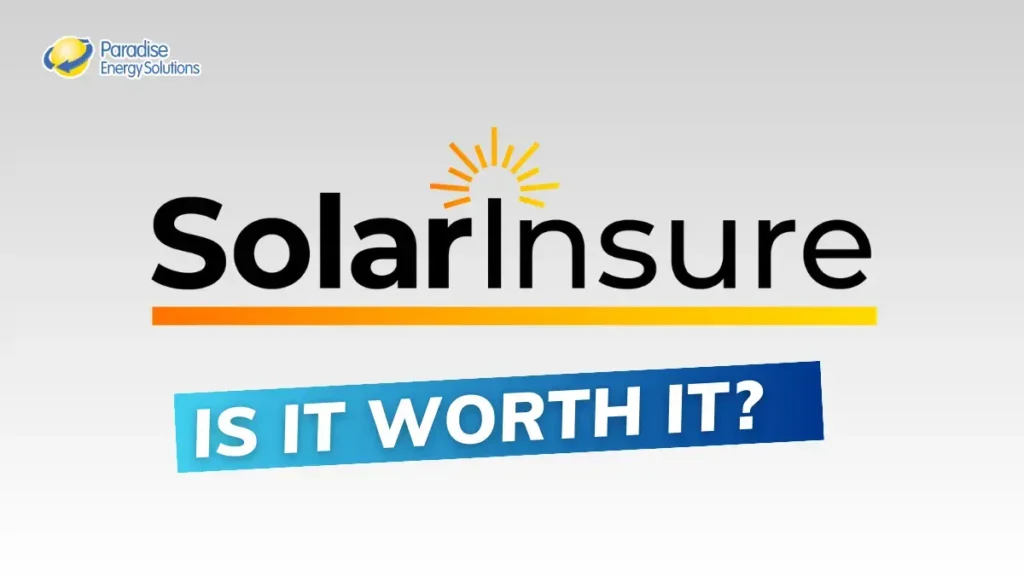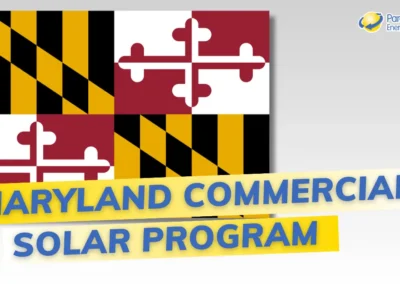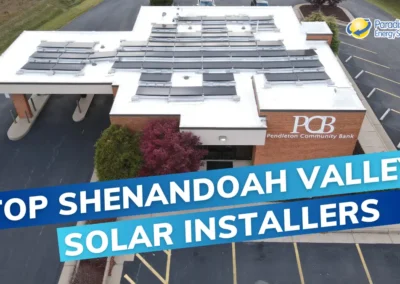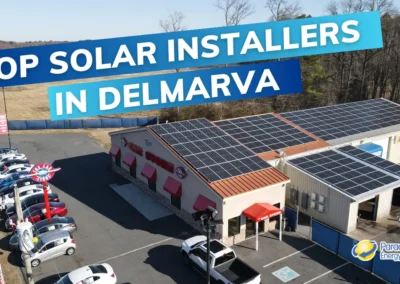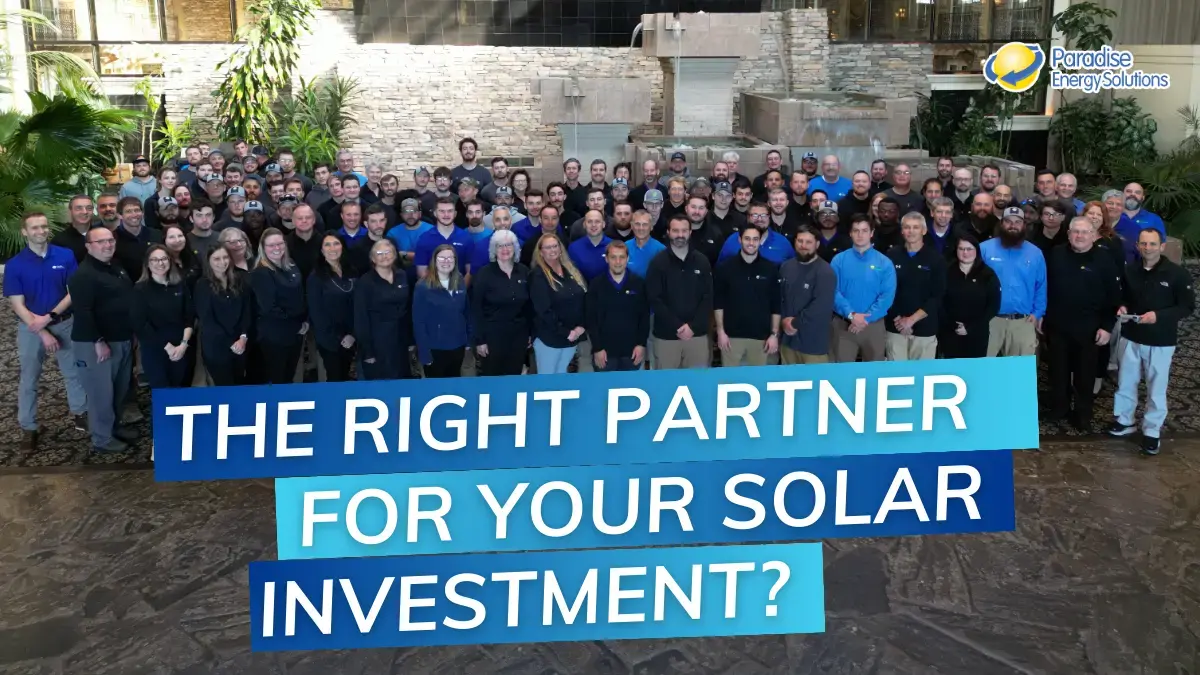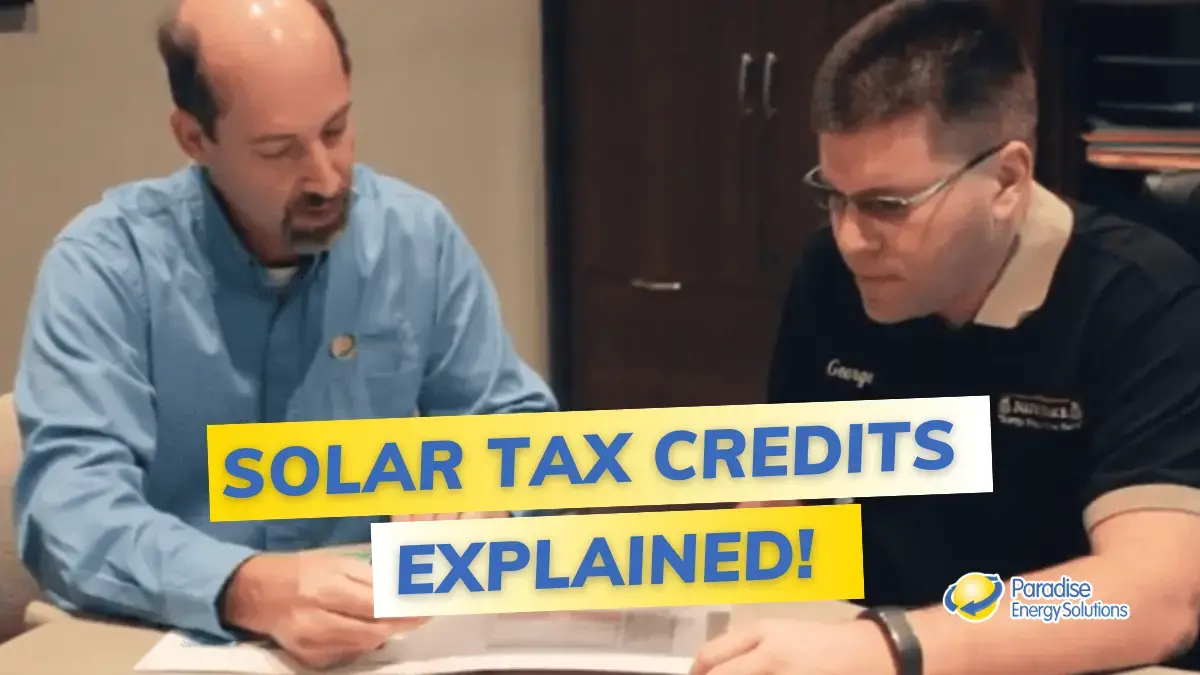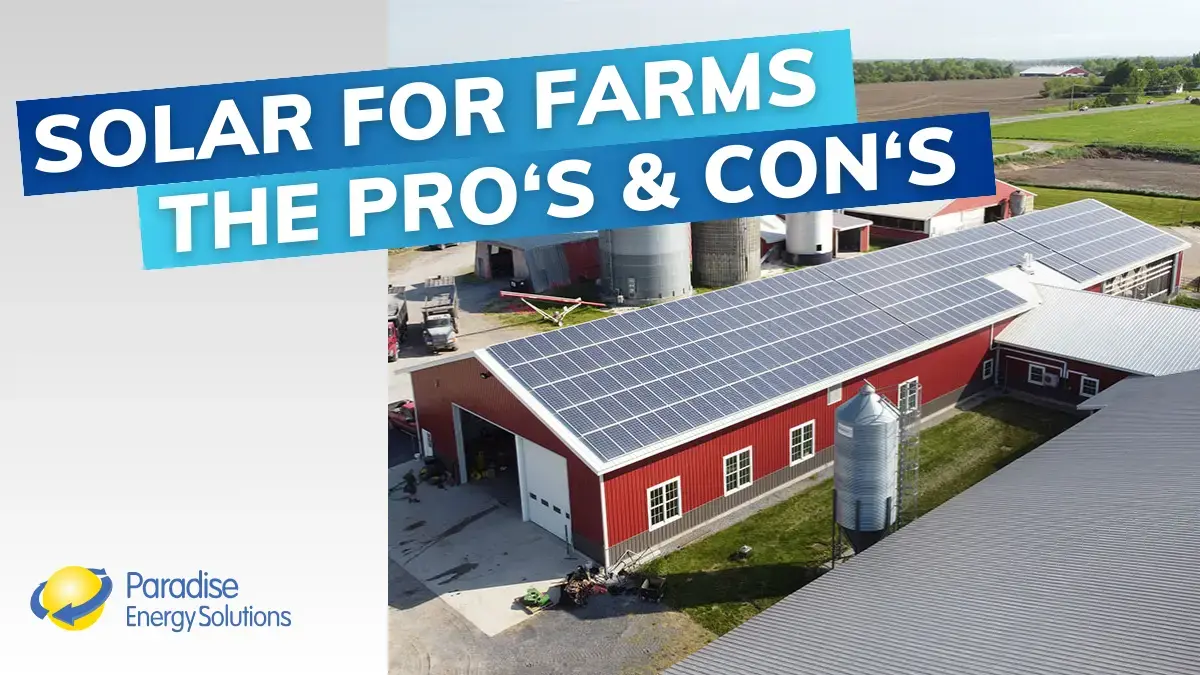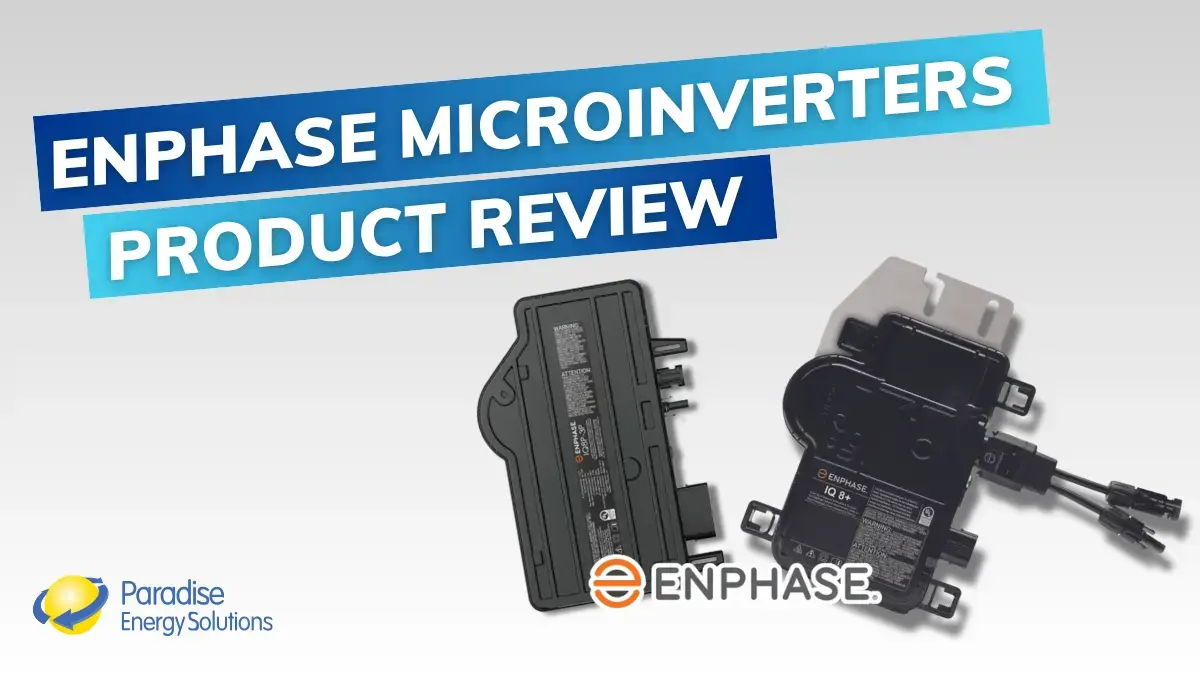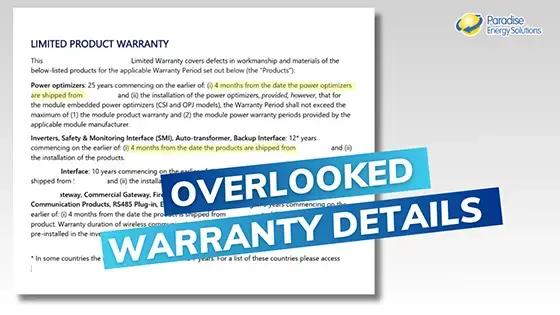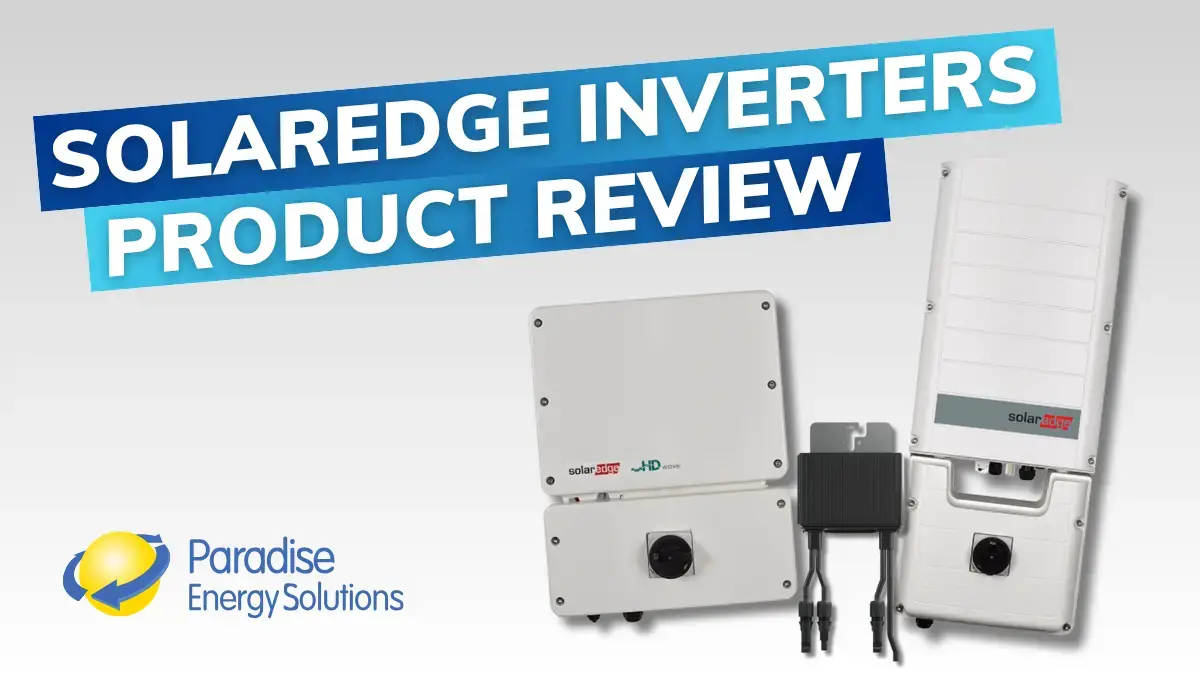Installing a solar energy system is a big investment. And as with any investment, you want to do whatever you can to manage risks. From faulty equipment to issues that halt energy production, solar-related troubles can lead to higher energy bills. That’s why warranties and production guarantees are so important.
Warranties help protect your solar energy system from unexpected issues. By and large, the most common warranties are those offered by equipment manufacturers and solar installers. However, there is a third option: SolarInsure. For a one-time fee, this third-party warranty program can add a level of protection to your system.
But is the added cost of SolarInsure justified by the protection it provides? In this SolarInsure review, we’ll get into the nitty gritty so you can make an informed decision for your investment in solar.
The Types of Solar Warranties
Before we get into it, it’s important to understand the different types of warranties and what each provides.
- Manufacturer Warranties: Offered and upheld by equipment manufacturers, these warranties protect the components of your solar system, like solar panels, inverters, and batteries. To some extent, they’re offered by pretty much every reputable solar equipment manufacturer.
The warranty period varies with brand and equipment type. Solar panel product warranties are often 25-30 years warranties, whereas most inverters’ and batteries’ warranties last 10-15 years. Equipment warranties typically cover repair or replacement costs of the devices themselves but don’t always cover the labor costs required for the repair.
- Installer Warranties: These are warranties offered by the company that installed your system. Most installers offer some type of warranty, though duration and breadth of coverage vary greatly.
Most installer warranties only cover their workmanship. In rare cases, installers also include production warranties, which guarantee your system produces at least as much electricity as they estimated it would. With this should come system monitoring services. At Paradise Energy, we offer all three of these services through our Triple 10 Guarantee.
- Third-Party Warranties: These warranties include third-party programs like SolarInsure. For an added fee, they work with solar installers to protect your system, providing a stipend for maintenance costs and other issues for 30 years.
What Is SolarInsure?
SolarInsure is a 30-year warranty on your entire solar energy system, including solar panels, inverters, batteries, roof penetrations, and labor. If there’s an issue with your manufacturer’s equipment, they’ll help cover the labor costs required to replace it. In return, you’ll pay a one-time, upfront fee for your warranty. There are no co-pays or additional fees.
It’s worth noting that SolarInsure is not an insurance policy. You should still have a separate insurance policy for your system or ensure it’s covered under your property or homeowners insurance.
SolarInsure must be purchased through the company that installed your solar system. This eliminates the legwork needed on your part to get your system protected. However, if your installer doesn’t offer SolarInsure, you’re out of luck.
SolarInsure backstops manufacturers’ warranties, meaning your equipment will still be protected if they go out of business. It’s also transferable, so if you sell the property on which your system is located, the new owners can reap the rewards of the warranty.
The Cons of SolarInsure
SolarInsure is a trusted company out to make investing in renewable energy more approachable. That’s a cause we definitely can get behind. However, there are pros and cons to everything, and we’re here to give our customers honest insight so they can make the decision they feel is best for them. So, here are some concerns we have with this service.
- As it stands now, SolarInsure likely won’t cover 100% of your service costs today, and the percentage of costs they cover will only decrease in the future.
- As of the writing of this article, they cover $300 per truck roll (that’s the term for whenever a technician is sent to a site to resolve an issue) or $100 an hour. That’s less than what many solar maintenance companies are charging for their services.
It’s important to understand that this $100 and $300 coverage will stay the same for the full duration of your 30-year warranty. Not only will it not cover the costs of today’s maintenance, but it will cover even less of the costs down the road. As with everything else, maintenance costs are guaranteed to increase over the course of three decades.
- This gets to the heart of our larger concern with this program. The one-time fee you pay upfront for the warranty isn’t an effective model for something that spans 30 years. It’s a short-term approach to something that requires a long-term solution. Solar hasn’t been a mainstream commodity for that long, so it’d be extremely difficult to accurately project costs over that time period.
- It’s also worth noting that adding SolarInsure to your project increases the number of companies involved or hands in the pot. Each company needs to make a profit somehow, or else they’ll go out of business. That will come at a cost to you as the system owner.
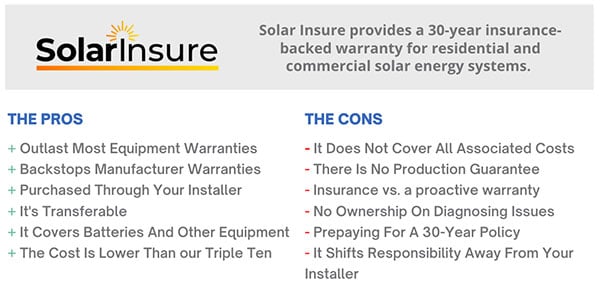
Does Paradise Energy Solutions Offer SolarInsure?
At this point, Paradise Energy does not offer SolarInsure. SolarInsure requires that 90% of an installer’s customers utilize their program. Our customers did not show enough interest in the program for us to maintain that percentage. We’re here to give our customers what they want, so it didn’t make sense on our end to force that upon them.
Instead, we offer our own substantial warranty that protects your system from all sides — the Triple Ten Guarantee. This warranty protects most of our installations.
How Our Triple Ten Guarantee Compares to SolarInsure
The Triple Ten Guarantee protects your system and investment for ten years through the following:
- Ten-year workmanship guarantee
- Ten years of system monitoring
- Ten-year production guarantee
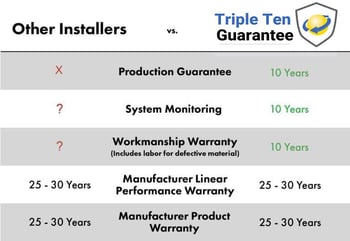 In addition to qualifying maintenance costs being 100% covered, we guarantee your system’s production. If your system produces less than we said it would in your solar proposal, we’ll pay you the difference.
In addition to qualifying maintenance costs being 100% covered, we guarantee your system’s production. If your system produces less than we said it would in your solar proposal, we’ll pay you the difference.
Not only does that protect your investment, but it also means we have a financial stake in your system. If your system has issues and stops producing, it’s in our best financial interest to get it fixed as soon as possible. That means we must regularly monitor your system for any issues impacting how much energy it produces. The longer we let that issue go unaddressed, the more money we lose.
However, as we said before, everything has its pros and cons, including our Triple Ten. There are some things SolarInsure offers that we don’t.
SolarInsure backstops manufacturer warranties. Our Triple Ten Guarantee doesn’t. We’ll replace that part for you, but we don’t backstop the warranty. Additionally, our warranty lasts for ten years, not 30, and SolarInsure is cheaper. However, SolarInsure’s coverage is much less comprehensive, and its effectiveness will wane over time as it fails to keep up with inflation.
To sum this up, Paradise Energy’s Triple Ten Guarantee puts us in a position where we’re financially motivated to ensure your system produces at least as much electricity as we said it would. SolarInsure may help, but they don’t have skin in the game that’s motivating them to get your system fixed as quickly as possible.
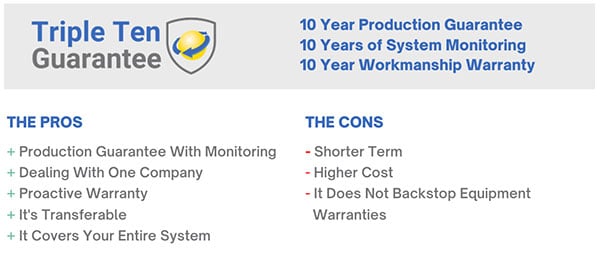
Is SolarInsure Worth the Money?
If you cannot find a solar installer with a substantial warranty that protects your system, but you can find ones that offer SolarInsure, it may be a good alternative. However, you should first evaluate the warranty policy and cost against its benefits in the long run.
If you go solar with Paradise Energy, you’ll benefit from our Triple Ten Guarantee. From extensive workmanship to monitoring and production guarantees, we are vested in ensuring your system continues to operate smoothly and generate tons of free energy.
*This blog was posted on April 13, 2023.
